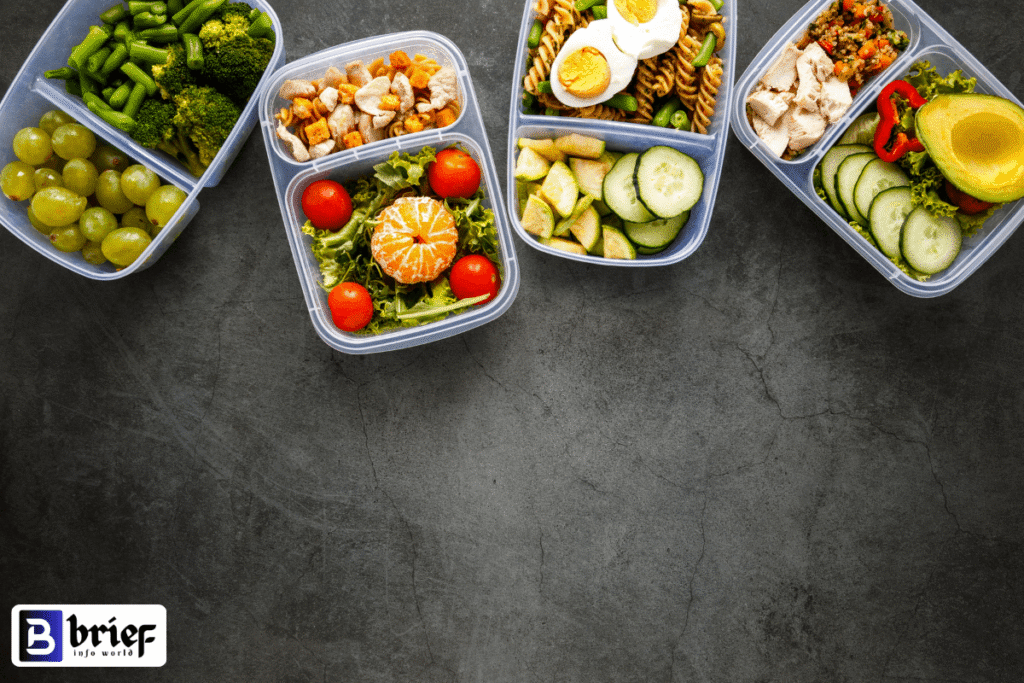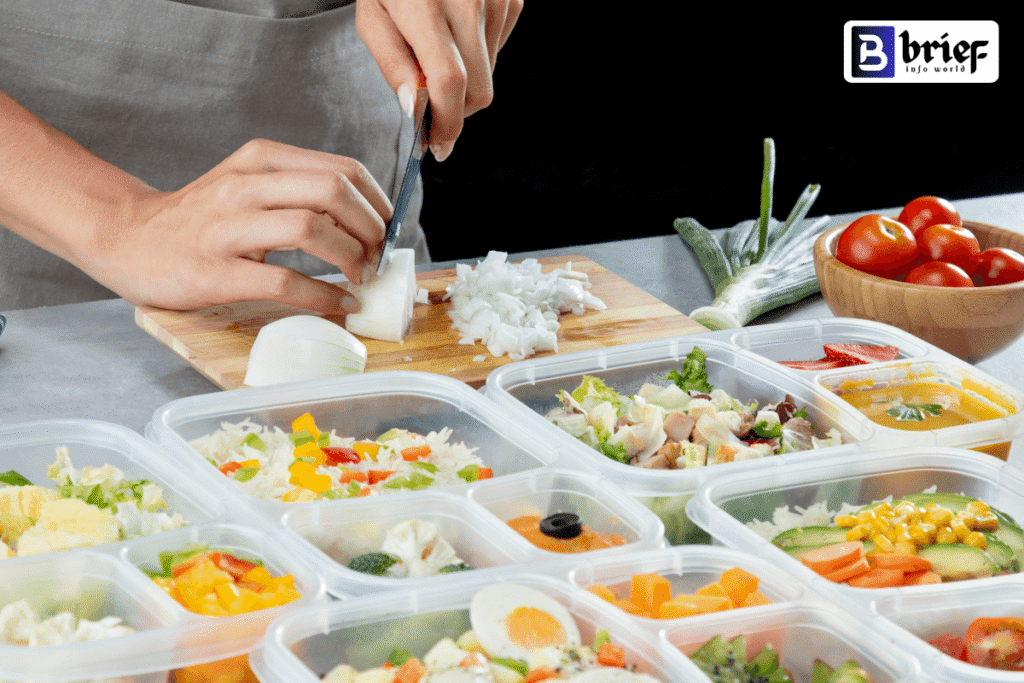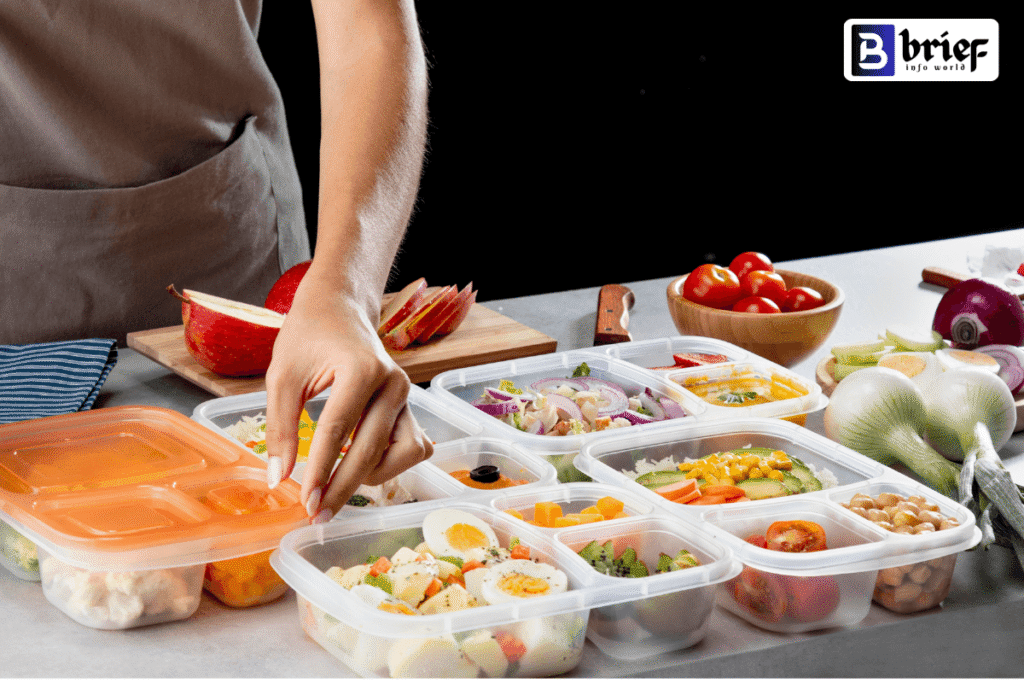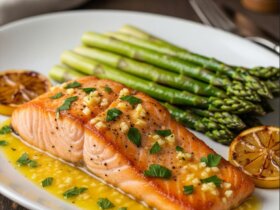
Too Busy to Cook? Try These Healthy Meal Prep Ideas for Busy Professionals.
In today’s fast-paced life, especially for busy professionals, taking care of your health is a big challenge. With the morning rush, the pressure of work at the office, meeting after meeting, and a tired body at the end of the day. Eating healthy food often feels like a luxury. As a result, fast food, unhealthy snacks, or oily food brought from outside in the afternoon become our daily companions. But imagine, what if there was a way that would save you time, save money, and at the same time help you live a healthy lifestyle?
This magical solution is called ‘meal prep’ or meal prepping. Although it is not a new idea. Its usefulness in busy life is much more than before. In this article, we will know the basics of meal prep. What it is, why it is important, how to get started, and some easy and delicious recipes that will make your life a lot easier.
What is meal prep?
Meal prep is the practice of pre-cooking or partially pre-cooking meals or ingredients for the next few days or the entire week on a specific day of the week (usually a holiday). Its main purpose is to ensure healthy and homemade meals during the busy days of the week. So that you do not have to go through the hassle of cooking every day or resort to unhealthy foods.
This can be cooking complete meals and packing them in boxes, such as rice, chicken curry and vegetable stir-fry. Or it can be just preparing the ingredients, such as chopping vegetables, marinating meat or making salad dressing. You can choose any method according to your convenience.
Incredible Benefits of Meal Prep for Busy Professionals
Meal prep is not just a trend. It is a life-changing habit. Its benefits will have a positive impact on your professional and personal life.
1. Saves Time
For a busy professional, there is nothing more valuable than time. Tasks like making breakfast every morning, thinking about what to eat for lunch, and cooking at home at night take up valuable time. You may save yourself the trouble of preparing meals for the entire week in a few hours each week by meal planning. All you need to do on hectic days is grab the box from the refrigerator and reheat the food.
2. Ensures Healthy Eating Habits
When you are hungry and have no healthy options at hand, ordering pizza or burgers seems like the easiest thing to do. The temptation to eat unhealthy meals naturally declines when you have tasty and nutritious food prepared and available in your refrigerator. You can control every ingredient in your food—how much oil, salt, or sugar you use is in your hands.
3. Saves Money
Eating out or ordering food regularly can be quite heavy on your pocket. A study has shown that people who regularly meal prep can save a significant amount of money on eating out every month. Buying in bulk and cooking at home can significantly reduce your food costs.
4. Reduces Mental Stress
“What should I cook today?” or “What should I eat for lunch?” These questions are a major cause of daily stress. This decision fatigue is alleviated by meal preparation. You can concentrate better on your work when you know that wholesome food is waiting for you.
5. Prevents Food Waste
Many of us buy a lot of vegetables or other things from the market, but they go to waste because we can’t cook them on time. During meal prep, you use up all the ingredients you buy, so there is almost no food waste. This is also good for the environment.
6. Helps in Weight Management
Meal prep is a great tool for those who want to lose or control their weight. Through it, you can easily control your calorie intake and portion control. Packing a moderate amount of food in each box can help you reduce your chances of overeating.

How to Start Meal Prep: A Step-by-Step Guide
The idea of meal prepping can seem daunting at first, but by following a few simple steps, you too can become a meal prep pro.
Step 1: Define Your Goals
First, decide why you want to meal prep. Is your goal to lose weight? Save time? Or just eat healthy? Your menu and preparation style will depend on your goals. For example, to lose weight, you need to focus on calories and carbohydrates.
Step 2: Create a Weekly Plan
Use a diary or digital app to plan a menu for the coming week. Write down what you will eat (breakfast, lunch, and dinner) on each day of the week. Instead of choosing recipes that are too complicated to start with, keep the list simple and your favorite foods.
A sample plan:
- Monday: Oats (breakfast), chicken salad (lunch), lentils and rice (dinner).
- Tuesday: Egg toast (breakfast), quinoa bowl (lunch), fish soup and rice (dinner).
- Create a schedule for the entire week.
Step 3: Make a Shopping List
Make a list of all the ingredients you need according to your menu plan. Then shop according to that list at the beginning of the week. This will prevent you from buying unnecessary things and there is no chance of forgetting anything.
Step 4: Choose a Specific Day & Time
Most people prefer to meal prep on Sunday, because it is the day off of the week. Set aside 2-4 hours of time on any day of the week, depending on your convenience. Working while listening to music or podcasts will make the time more enjoyable.
Step 5: The Cooking Process
Breaking this step down into smaller steps will make the job easier.
Wash and Chop: First, wash and chop all the vegetables. Chop or paste the onion, garlic, and ginger. Cut the vegetables needed for the salad into separate boxes.
Batch Cooking: Prepare foods that can be cooked in large quantities at once. For example:
Grains: Cook rice, quinoa, or brown rice for the entire week.
Protein: Grill or bake chicken, boil eggs, or cook lentils.
Vegetables: Roast or steam a variety of vegetables together.
Portioning: Once cooked, let the food cool. Then, pack the food into separate airtight containers in appropriate quantities for each meal. You can label each box with the name of the food and the date.
Step 6: Proper Storage
Proper storage is essential to maintain the freshness and quality of food.
Store foods that you will eat within the next 3-4 days in the regular compartment of the refrigerator.
Store foods that you will eat towards the end of the week in the deep freezer. The night before eating, take the box out of the deep freezer and store it in the regular compartment.
Use good quality, BPA-free and microwave-safe containers. Glass containers are the best option in this case.
Some Easy Ideas and Recipes for Healthy Meal Prep
Here are some easy and delicious meal prep ideas that you can easily try.
For Breakfast
Breakfast is the most important meal of the day. It should not be skipped at all.
Overnight Oats: Mix rolled oats, milk (regular or almond milk), chia seeds, yogurt and a little honey together in a glass jar and refrigerate overnight. In the morning, spread some fruit and nuts on top and enjoy. This can be prepared for three to four days at a time.
Egg Muffins: Apply a thin layer of oil to a muffin tray. Beat the eggs and mix them with your favorite vegetables (capsicum, onion, spinach) and a little cheese and pour into each cup. Bake in the oven at 180° Celsius for 15-20 minutes. Cool and refrigerate. Just heat them up in the morning.
Smoothie Packs: Fill a ziplock bag with your favorite fruit (banana, mango, berries), spinach and a spoonful of chia or flax seeds and refrigerate. In the morning, just pour the ingredients from the bag into a blender and blend with milk or yogurt.
For Lunch
These options are great for office lunches.
Bengali Lunch Box: The simplest and most familiar. Rice in one box, dal or curry (such as chicken or fish broth) in another small box, and a slice of lemon and cucumber. You can also prepare this from food cooked the night before.
Chicken/Chickpea Salad Jar: It looks nice to layer in a glass jar and the salad doesn’t get soggy.
First layer (bottom): Salad dressing (lemon juice, olive oil, salt, pepper).
Second layer: Hard vegetables (cucumber, carrot, capsicum).
Third layer: Protein (grilled chicken pieces or boiled chickpeas).
Fourth layer: Soft vegetables and grains (tomatoes, boiled corn, quinoa).
Fifth layer (top): Salad leaves (lettuce, spinach).
Just shake the jar while eating so that the dressing mixes with the whole salad.
Quinoa Bowl: Arrange roasted vegetables (broccoli, sweet potato), boiled chickpeas or black beans, and grilled cheese or chicken pieces on top of a box of cooked quinoa. You can also have a little yogurt or hummus with it.
For Dinner
These preps will come in handy if you don’t feel like cooking at the end of the day.
Sheet Pan Dinner: Marinate chicken pieces or fish fillets with your favorite spices. When eating, spread some vegetables (potatoes, carrots, broccoli) with the marinated meat on a baking tray and bake in the oven. Your dinner will be ready in 30-35 minutes.
Marinated Proteins: At the beginning of the week, marinate different types of proteins (chicken, fish, cheese) with different spices, put them in a ziplock bag and store them in the refrigerator. Simply put them in the oven or pan to cook.
Homemade Soups: Make soup with a variety of vegetables and store them in a large pot. You can store it in the fridge for up to a week. It will make a light and nutritious dinner if you simply reheat it at night.
Healthy Snacks
Keep these healthy snacks on hand instead of chips or biscuits to satisfy your afternoon hunger.
- Boiled eggs
- Chopped fruit (apple, guava)
- Mix of nuts and dried fruits
- Cup of yogurt
- Hummus with carrot or cucumber slices
Food Ingredients and Nutrition Analysis
Protein – Muscle Recovery, Digestion Uses: Chicken, Fish, Eggs, Lentils
Carbohydrates – Energy Supply
Fat – Heart Protection (Olive Oil, Nuts)
Fiber – Digestion, Weight Control
Vitamins and Minerals – Consistency of Thought and Neurological Performance
PSD Macro—Be Full of Energy, Not Just Nutrition Every Day.

People’s Stories: Success and Transformation
Robin (30 Years Old, Software Engineer)
“Initially, I thought there was a risk, but if you prepare food regularly, you will always be healthy during the workday.”
Farhana (28 Years Old, Marketing Manager)
“I have found many benefits in meetings or travel by making protein bars and sandwiches.”
Mental and physical benefits
Less stress: Freedom from the thought of “What should I eat today?”
Stable health: Regular, healthy food → Wellness and disease prevention
Energy and concentration: Well-structured food → Increased performance
Self-esteem: Cooking with your own hands → Confidence and happiness
Frequently Asked Questions (FAQs)
Question 1: Do ready-made meals stay fresh?
Answer: Yes, if stored properly. Food stays fresh for up to 3-5 days if stored in airtight containers and refrigerated at the right temperature. Some foods, such as soups or curries, stay fresh for up to a few weeks in the freezer. Foods like salads can also stay fresh when you eat them if you arrange them in the right layers.
Question 2: Wouldn’t it get boring to eat the same food every day?
Answer: This is a common concern. To avoid boredom, vary your weekly menu. Try a new recipe each week. You can make different dishes with the same ingredients. For example, you might have a salad with grilled chicken one day, a quinoa bowl the next, and a sandwich the next.
Question 3: What type of container is best for meal prep?
Answer: Glass containers are best because they are hygienic, don’t retain stains or odors, and are microwave and dishwasher safe. However, you can also use good quality, BPA-free plastic containers because they are lightweight and easy to carry. Buy containers in different sizes so that you can store different types of food.
Question 4: I don’t like cooking at all are there any tips for me?
Answer: Sure. A ‘no-cook’ or very low-cook meal prep would be best for you. For example – overnight oats, salad jars, sandwiches, yogurt-fruit-nut parfaits, etc. You can also prepare just the ingredients, such as chopping vegetables or marinating meat. This will reduce the main cooking time a lot.
Question 5: How much time does it take to meal prep per week?
Answer: It depends on your menu and experience. It may take 3-4 hours at first. But once you get used to it, you can complete the entire week’s preparation within 2-3 hours. Multitask to save time – while the rice is cooking, chop the vegetables.
Question 6: How can meal prep help you lose weight?
Answer: Controlling calorie intake is important for weight loss. With meal prep, you can measure the amount of each food (portion) in advance. This reduces the tendency to overeat. In addition, having healthy homemade food at hand, you can stay away from unhealthy calories from fast food or processed foods.
The Final Word: Healthy Meal Prep Ideas for Busy Professionals
Meal prep is not just a meal prep strategy for busy professionals. It’s the first step towards a healthier and more disciplined lifestyle. It puts you back in control of your health, saves you time and money, and relieves stress.
It may seem a bit challenging at first, but start small. Maybe you prep just lunch the first week, then add breakfast the next week. Gradually, it will become a habit and you will start reaping the benefits. Remember, this investment in your health will be one of the best investments of your life.
So why wait? Start your first meal prep plan today and get on the path to a healthy, strong, and stress-free life.

Hi, I’m M Saif, a digital marketer with a strong focus on SEO and content writing. I help businesses improve their online visibility, drive organic traffic, and create engaging content that converts. With a results-driven approach, I work on strategies that not only boost rankings but also deliver real value to audiences.










Leave a Reply